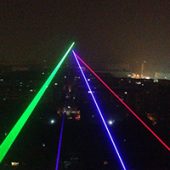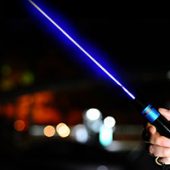50 milliwatts is probably the maximum needed power for almost any laser pointing use.
For seeing the laser “dot” on a wall or surface indoors or in dim light, 5 milliwatts of green is fine. The most demanding general-use pointing application is for pointing out objects in bright sunlight such as a daytime city architecture tour, and for pointing out stars at night when it is necessary to see the beam in mid-air. For these uses, 5-25 mW should be fine, with a maximum of 50 mW for tough situations (high ambient light brightness, showing stars to a large group).
The Norwegian Radiation Protection Authority states that 20 mW is the limit: “It is not known that laser pointers that are stronger than approx. 20 milliwatts can be used for anything useful. The effect of laser pointers used to point out constellations and like at night, should not exceed a maximum of 20 milliwatts. The reason is that the beam can destroy the night vision of the spectators so that they can no longer perceive weak starlight.”
A study, “Green Laser Pointers for Visual Astronomy: How Much Power Is Enough?”, had 23 observers adjust the power of a 532 nm green laser beam “propagating skyward through the atmosphere in a heavily light-polluted urban setting.” The lowest power where the beam could clearly be seen was between 1.4 and 5.6 milliwatts. The average of all powers chosen was 2.4 milliwatts. The authors concluded that “Green laser pointers with output powers below 5 mW (laser classes American National Standards Institute 3a or International Electrotechnical Commission 3R) appear to be sufficient for use in educational nighttime outdoors activities, providing enough bright beams at reasonable safety levels.”
If you like to pop balloons, ignite matches, or put the laser through textured glass for a private light show in your home, you may want a more powerful laser.




